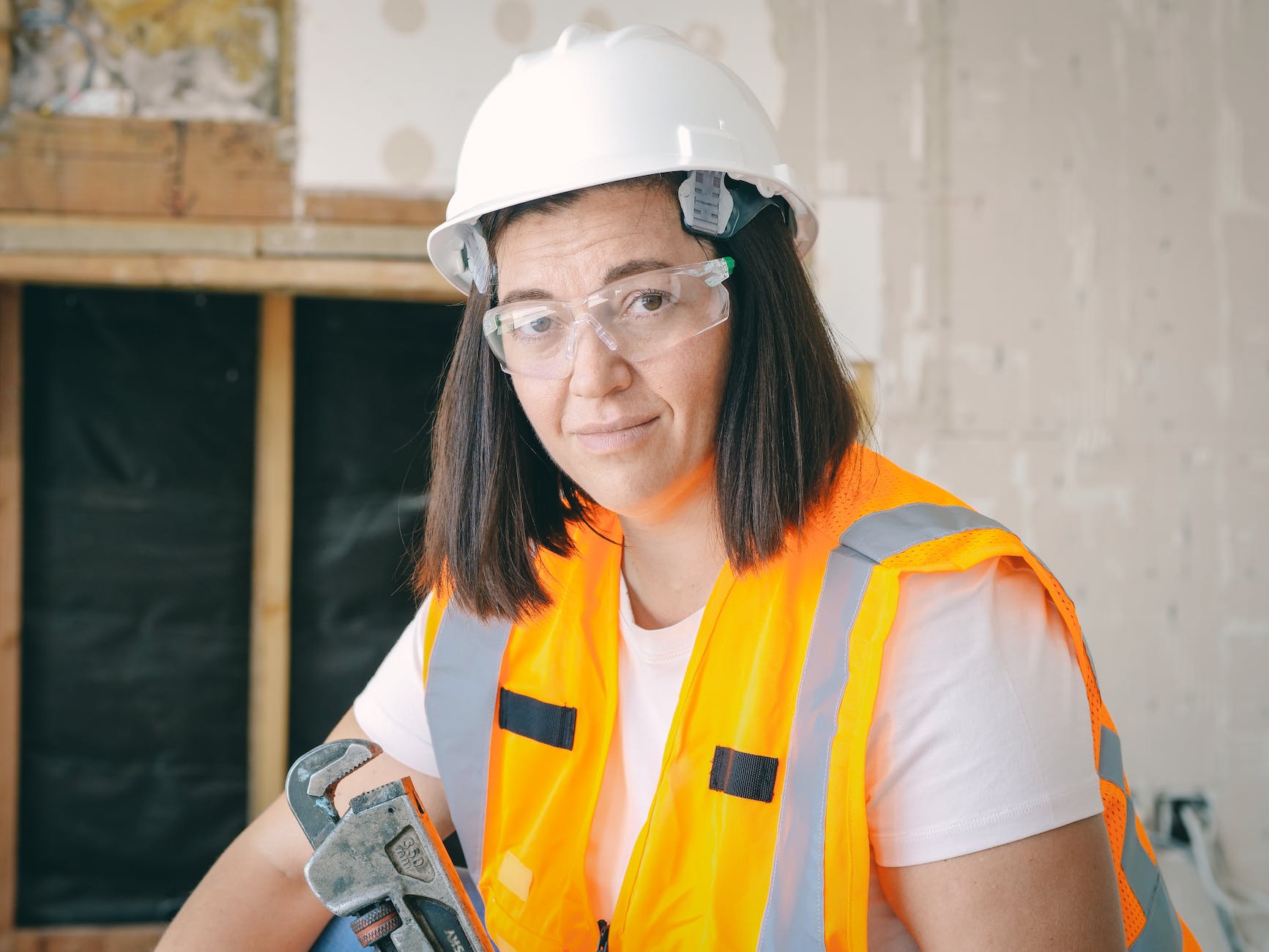
Personal Protective Equipment (PPE): Selection, Usage, and Maintenance for Safety Officers
Personal Protective Equipment (PPE) is a crucial aspect of ensuring the safety and well-being of individuals in various workplaces. Safety officers, in their role as guardians of workplace safety, play a pivotal role in the proper selection, usage, and maintenance of PPE. In this article, we’ll explore the key considerations that safety officers should take into account to maximize the effectiveness of PPE in safeguarding workers.
Introduction
The Vital Role of PPE in Workplace Safety
Personal Protective Equipment serves as the last line of defense against workplace hazards. It includes a wide range of items, from helmets and gloves to respiratory protection and high-visibility clothing. Safety officers are tasked with not only selecting appropriate PPE but also ensuring its correct usage and ongoing maintenance.
Legal Compliance and Standards
Adherence to legal requirements and industry standards is fundamental. Safety officers need to be well-versed in relevant regulations to guarantee that the chosen PPE meets the necessary criteria. Compliance not only avoids legal issues but, more importantly, ensures the safety of workers.
Selection of PPE
Comprehensive Risk Assessment
Before selecting PPE, safety officers must conduct a comprehensive risk assessment. This involves identifying potential hazards in the workplace and assessing the level of risk associated with each. The goal is to match the specific type of PPE to the identified risks, ensuring adequate protection.
Matching PPE to Hazards
Different hazards require different types of PPE. Safety officers must understand the nature of the work environment and select PPE accordingly. For example, construction sites may require hard hats for head protection, while chemical handling may necessitate specialized gloves and goggles.
Usage Guidelines
Employee Training and Education
Proper usage of PPE begins with education. Safety officers are responsible for organizing training sessions to instruct employees on the correct way to wear, adjust, and remove PPE. This includes understanding the limitations of each piece of equipment and recognizing when PPE needs replacement.
Regular Inspections
Safety officers should establish a routine for inspecting PPE. This includes checking for any signs of damage, wear, or malfunction. Regular inspections ensure that PPE remains in optimal condition and provides the intended level of protection.
Maintenance Practices
Cleaning and Storage Protocols
Maintaining the cleanliness of PPE is crucial for its effectiveness. Safety officers should establish clear cleaning protocols for items like goggles, ear protection, and respiratory equipment. Additionally, proper storage is essential to prevent damage and contamination.
Replacement Schedules
PPE has a finite lifespan. Safety officers need to establish replacement schedules based on the manufacturer’s recommendations and usage patterns. Regularly replacing PPE ensures that workers are always equipped with reliable protective gear.
Comfort and Ergonomics
Employee Feedback
Safety officers should actively seek feedback from employees regarding the comfort and fit of PPE. Uncomfortable or ill-fitting equipment is less likely to be used consistently. By addressing concerns and preferences, safety officers can enhance compliance with PPE protocols.
Investing in Ergonomic Designs
Advancements in PPE technology include ergonomic designs that prioritize comfort without compromising safety. Safety officers should stay informed about these innovations and consider implementing ergonomic PPE options to improve overall user satisfaction.
Handling Specialized PPE
Respiratory Protection
In environments where respiratory hazards exist, safety officers must carefully select and manage respiratory protection. This includes fit testing, regular inspections, and ensuring that employees are trained on the proper use and maintenance of respiratory PPE.
Hearing Protection
Noise-related hazards require specialized hearing protection. Safety officers need to assess noise levels, provide appropriate ear protection, and ensure that employees understand how to use and care for their hearing protection devices.
Personal Protective Equipment (PPE) is crucial in safeguarding the health and well-being of workers in various industries. Safety officers play a pivotal role in the proper selection, usage, and maintenance of PPE. Here are key considerations for safety officers in managing PPE:- Risk Assessment: Safety officers begin by conducting a thorough risk assessment to identify potential hazards in the workplace. Based on this assessment, they determine the types of PPE required for specific tasks and environments.
- Selection of Appropriate PPE: Safety officers are responsible for selecting the right type of PPE for each identified hazard. This includes considering factors such as the nature of the work, the level of protection required, and individual worker characteristics. Common types of PPE include gloves, eye protection, respiratory protection, hearing protection, and protective clothing.
- Ensuring Proper Fit: Proper fit is essential for the effectiveness of PPE. Safety officers educate workers on how to properly wear and adjust their PPE to ensure a snug and comfortable fit. Ill-fitting PPE can compromise its protective capabilities.
- Training and Education: Safety officers conduct training sessions to educate workers on the importance of PPE and proper usage. Training covers the correct way to wear, remove, and care for PPE. Workers should also be informed about the limitations and expected lifespan of their PPE.
- Regular Inspection and Maintenance: Safety officers establish and implement procedures for the regular inspection and maintenance of PPE. This includes checking for signs of wear, damage, or deterioration. Any damaged or malfunctioning PPE should be promptly replaced to maintain its effectiveness.
- Storage and Accessibility: Safety officers ensure that proper storage facilities are available for PPE when not in use. PPE should be stored in a clean and dry environment to prevent damage. Additionally, easy accessibility is essential to encourage consistent use by workers.
- Updating PPE Guidelines: Safety officers stay informed about industry standards and regulations related to PPE. They update PPE guidelines and procedures accordingly, ensuring that the equipment used meets the latest safety standards.
- Encouraging Compliance: Safety officers play a role in promoting a culture of compliance among workers. They emphasize the importance of wearing PPE consistently, highlighting the potential risks associated with non-compliance.
- Monitoring and Evaluation: Safety officers regularly monitor the usage of PPE, seeking feedback from workers and making adjustments to the PPE program as needed. Continuous evaluation helps identify areas for improvement and ensures ongoing effectiveness.
- Emergency Response Planning: Safety officers incorporate PPE considerations into emergency response plans. Workers should be trained on the proper use of PPE during emergency situations to maximize protection.
In conclusion, safety officers play a critical role in the comprehensive management of Personal Protective Equipment. Through thorough risk assessment, proper selection, education, and ongoing maintenance, they contribute to creating a safer working environment for all employees.Conclusion
In conclusion, the effective selection, usage, and maintenance of Personal Protective Equipment are integral components of a comprehensive workplace safety strategy. Safety officers, armed with knowledge of industry standards and a commitment to regular inspections and employee education, are essential in ensuring that PPE fulfills its vital role in protecting workers from potential hazards.
Hearing Protection: Personal Protective Equipment
Body Protection: Personal Protective Equipment
Footwear and Leg Protection: Personal Protective Equipment
Hand Protection: Personal Protective Equipment
5 Unique FAQs
- Q: How often should PPE be replaced?
- A: The replacement schedule for PPE varies depending on the type and manufacturer’s recommendations. Safety officers should establish regular replacement schedules based on these factors.
- Q: Why is it important to match specific PPE to identified hazards?
- A: Matching PPE to identified hazards ensures that workers receive the appropriate level of protection. Using the wrong type of PPE may expose individuals to unnecessary risks.
- Q: How can safety officers encourage employee compliance with PPE protocols?
- A: Safety officers can encourage compliance by providing thorough training, actively seeking employee feedback, and investing in ergonomic and comfortable PPE options.
- Q: What are the key considerations for handling respiratory protection as part of PPE?
- A: Handling respiratory protection involves fit testing, regular inspections, and proper training for employees on usage and maintenance to ensure its effectiveness.
- Q: Are there advancements in PPE technology that enhance comfort and usability?
- A: Yes, there are ergonomic designs and innovations in PPE technology that prioritize comfort without compromising safety. Safety officers should stay informed about these advancements for better user satisfaction.
























